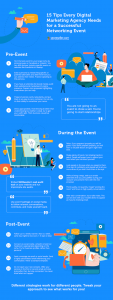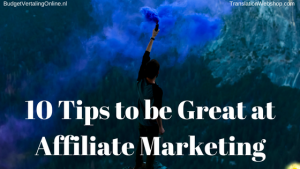— March 11, 2019
For many businesses, retaining agency expertise is a huge obstacle rather than a strategic advantage. Research from content intelligence platform Vennli indicates that the average relationship between a client and an agency lasts just two to four years.
Without a doubt, transitioning from one agency to another can be quite costly. When businesses move from one agency to the next in rapid succession, they’re wasting precious money and time.
Even when an agency specializes in a particular industry, it must spend time learning about its new clients and their internal processes. As the relationship matures, efficiency increases. Companies that frequently change agencies will almost never achieve the same level of efficiency as those that establish lasting partnerships.
What Makes Agency Turnover Prevalent
In large part, agencies themselves are responsible for the high turnover rate. It can start in the sales process: Agencies tend to pull out all the stops and pitch clients with the A-team, but they bring in the juniors to actually execute the plan once a proposal is accepted. This leads to a lack of trust and faith from the start of the relationship.
The very nature of agency life makes it hard to nurture strong, lasting relationships. The looming pressure of billable hours discourages agency teams from spending time building relationships, learning about a client’s business, or researching more about a client’s industry beyond the onboarding process. Agencies need to start viewing this time spent as an investment instead of a loss of profitability. Ironically, agencies will spend massive amounts of time with prospects (over months or even years) but push clients to pay for every minute of their time once a contract is signed.
In the B2B world, new agencies experience even more of a knowledge gap because of the complex routes to market B2B businesses typically have. For example, one of our clients is a food manufacturing company that sells through brokers, distributors, group purchasing organizations (GPOs), and more. That means we need to understand the client’s food and beverage brands and each brand’s route to market — on top of the customized solutions that it sells to national accounts. Add in internal priorities, complex approval processes, and multiple layers of approval, and you’re looking at a wealth of experience that a new agency cannot acquire in just two years.
There are countless other factors that lead to the high turnover rate for agencies. In an attempt to become irreplaceable, many agencies will try to take on projects and processes that they simply don’t have the expertise or resources to do well. Sometimes, agencies attempt to take over the client’s work that should really be completed in-house. It makes sense — from a relationship and financial perspective — for agencies to take on more work for their clients, but it’s not always in the best interest of those clients.
How to Build Stronger, Longer-Lasting Agency Relationships
If there’s one message to take away, know that it’s not all doom-and-gloom. With a shift in focus on both the client and agency sides, these problems can resolve themselves. At our agency, for example, our client relationships last an average of 11.5 years.
If your company isn’t getting what it needs out of an agency relationship, press the pause button before jumping ship. Decide if it makes sense for your company to re-evaluate and rebuild the relationship. Instead of immediately looking elsewhere, try taking the following steps to get the most out of your existing relationship.
1. Challenge your agency.
Here’s a hint to any client who partners with an agency: If you don’t feel like you can tell the agency that something is wrong or that it isn’t delivering, that’s a red flag. Clients should be able to question decisions and peer behind the curtain.
Find ways to challenge your agency. Set the expectation that your account team should learn more about your business and industry, become more efficient over time, and pitch new ideas regularly. If you as the client can approach the partnership in an open and forward-thinking way, then you’re giving the relationship plenty of room to grow. In our experience working with clients, we’ve found that this mindset produces new and better campaigns that drive improved results.
A great way to encourage this mentality is to have quarterly marketing summits wherein your agency can present case studies of solutions it has created for other clients, demonstrate its expertise in emerging trends, or even have other clients present their experiences. This approach can lead to plenty of learning on both sides as well as a healthy, fun discussion that strengthens the relationship.
2. Maintain open, transparent communication.
When we sign on new clients that have transitioned agencies, we usually ask what prompted the change. A lot of those clients say their old agency “didn’t listen” or “didn’t deliver the results we wanted.” When we ask if the client expressed those concerns to the agency before parting ways, it turns out they usually didn’t — “Well, they didn’t ask about it,” the client says.
If communication isn’t honest and transparent on both sides, it will inevitably compromise results and lead to dissatisfaction. Any agency that takes itself seriously should want clients to be honest, transparent, and open. What does transparency look like in an agency-client relationship? It means being honest about expected results, providing justification for any major changes, and outlining factors such as timeline, strategy, and project components from the beginning.
Clients should look for agencies that are transparent about their process, testing, analysis, and strategy. Be wary of any agency that claims to “know everything” — because who actually does know everything? Agencies that are honest about their strengths, what they want or need to learn, and what they plan on testing tend to be more trustworthy. Agencies should be sharing the data and information they’ve learned on behalf of their client about what works and, more importantly, what didn’t work so that everyone can make progress toward the goals.
3. Develop relationships with human beings.
Clients might deal with a few account managers on a regular basis, but take the time to get to know the other folks on your team. Bring that mindset to all levels of the agency, including senior-level leadership.
Clients should allow agencies to attend as many of their relevant internal meetings as possible, including sales meetings, planning meetings, and staff meetings on important topics. This gives the agency a baseline for education, training, analytics, ROI tracking, and more.
Owners, CEOs, and VPs of the client’s business should be heard and known by senior leadership at agencies. The conversations between these executives will differ from conversations with other agency employees, ideally ensuring that the relationship continues to meet the needs of both parties.
By connecting with real people across many levels of leadership, your two companies can form a true partnership; these relationships will go a long way toward aligning strategic vision. Plus, life is much better when we work with people we know and generally like. Life is too short to work with people — or an agency — that you don’t genuinely like and appreciate.
Agencies can deliver a deep bench of marketing expertise at a fraction of the cost of an internal marketing team. Not every relationship will be “the one,” but it’s your responsibility to ensure you’re pushing your agency to be the best it can be. Considering the wasted resources of a switch, it’s always worth giving this relationship a legitimate try before you call it quits.
Want to learn more about what pairing with a relationship-driven pipeline marketing agency can do for your company? Sign up for this free 90-day conversion program for more information.
Business & Finance Articles on Business 2 Community
(76)




